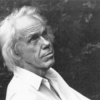Minor White

Minor White
Minor Martin Whitewas an American photographer, theoretician, critic and educator. He combined an intense interest in how people viewed and understood photographs with a personal vision that was guided by a variety of spiritual and intellectual philosophies. Starting in Oregon in 1937 and continuing until he died in 1976, White made thousands of black-and-white and color photographs of landscapes, people and abstract subject matter, created with both technical mastery and a strong visual sense of light and shadow. He taught...
NationalityAmerican
ProfessionPhotographer
Date of Birth9 July 1908
CountryUnited States of America
The state of mind of the photographer creating is a blank. I might add that this condition exists only at special times, namely when looking for pictures. -Something keeps him from falling off curbs, down open manholes, into bumpers of skidding trucks while in this condition but goes off duty at other times. . . . This is a very special kind of blank. A very active state of mind really, it is a very receptive state. . .
While we cannot describe its appearance (the equivalent), we can define its function. When a photograph functions as an Equivalent we can say that at that moment, and for that person the photograph acts as a symbol or plays the role of a metaphor for something that is beyond the subject photographed.
Let the subject generate its own photographs. Become a camera.
Often while traveling with a camera we arrive just as the sun slips over the horizon of a moment, too late to expose film, only time enough to expose our hearts.
We could teach photography as a way to make a living, and best of all, somehow to get students to experience for themselves photography as a way of life.
It is curious that I always want to group things, a series of sonnets, a series of photographs; whatever rationalizations appear, they originate in urges that are rarely satisfied with single images.
Reaching a 'creative' state of mind thru positive action is considered preferable to waiting for 'inspiration'.
The photographer projects himself into everything he sees, identifying himself with everything in order to know it and to feel it better.
Be still with yourself until the object of your attention affirms your presence.
To engage a sequence, we keep in mind the photographs on either side of the one in our eye.
Before he has seen the whole, how unusually perceptive and imaginative the person must be to evolve the entire sequence by meditating on its single, pair or triplet of essential images.
Photography is a language more universal than words.
...innocence of eye has a quality of its own. It means to see as a child sees, with freshness and acknowledgment of the wonder; it also means to see as an adult sees who has gone full circle and once again sees as a child - with freshness and an even deeper sense of wonder.
When I look at pictures I have made, I have forgotten what I saw in front of the camera and respond only to what I am seeing in the photographs.